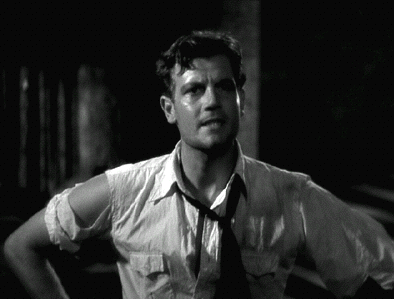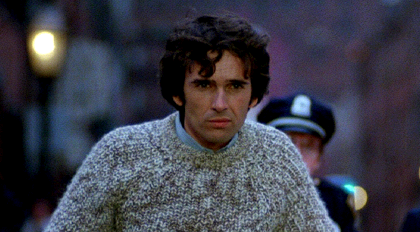Directors: Ernest B. Schoedsack, Irving Pichel
Writers: James Ashmore Creelman adapting Richard Connell’s 1924 short story
Producers: Merian C. Cooper, Ernest B. Schoedack
Cast: Joel McCrea, Leslie Banks, Fay Wray, Robert Armstrong, Noble Johnson, Steve Clemente (as Steve Clemento), William B. Davidson, Dutch Hendrian, (and uncredited cast) Phil Tead, Hale Hamilton, Arnold Gray, James Flavin, Landers Stevens, Wesley Hopper
When a yacht crashes into a reef and sinks just off the South American coast, its lone survivor, Bob Rainsford (Joel McCrea), is washed ashore on a small jungle island. He makes his way inland to the castle of Count Zaroff (Leslie Banks). The Russian Count is an avid hunter and recognizes Rainsford as an author and hunting authority. The Count has two other guests who are also recent shipwreck survivors, siblings Eve and Martin Trowbridge (Fay Wray and Robert Armstrong). The cordial Count soon reveals that the lighted buoys around his island meant to guide ships past the reefs are moved to cause the vessels to crash and sink. Zaroff uses any surviving castaways on his island as human prey to provide a greater challenge for his hunting mania.
The Flashback Fanatic movie review
While the filmmaking dynamic duo of Merian C. Cooper and Ernest B. Schoedsack were working on their elaborate and special effects-filled epic King Kong (1933) at RKO Radio Pictures, they decided to multi-task. They adapted the O. Henry Award-winning Richard Connell short story, “The Most Dangerous Game,” to be shot during pauses in King Kong’s lengthy production. They would utilize King Kong’s jungle sets and have four of its cast (Fay Wray, Robert Armstrong, Noble Johnson, and Steve Clemente) play roles in The Most Dangerous Game film during breaks in the King Kong shooting schedule.
While this all seems like it might be biting off even more than King Kong could chew, Cooper and Schoedsack succeeded in simultaneously making two classic movies of pre-Code horror. Of course, King Kong is an innovative, effects-driven extravaganza with one of the most famous movie monsters of all time, while The Most Dangerous Game is an intense and compact thriller with one of the most memorable fiends in cinema history.
The Most Dangerous Game film incorporates most of the details from Richard Connell’s short story and elaborates upon them. Most of the changes involve even more action, which also help to add a bit to the movie’s running time that still just barely steps over the hour mark. This is a film that doesn’t have a bit of waste. The only recess from danger is there to set the remote, exotic scene and establish the twisted motive that results in murderous sport.
Another addition to Connell’s story for the film is a beautiful woman. As Robert Armstrong’s character of Carl Denham stated in King Kong, “The public, bless ‘em, must have a pretty face to look at.” We can’t complain when filmmaker Denham finds Ann Darrow to provide that pretty face for his film. Here in The Most Dangerous Game, we can’t complain when we get that same beauty provided by ’30s scream queen Fay Wray. However, Wray’s Eve Trowbridge is not just a romance plot device. Things are so frantic that there is not even time for Eve and Bob Rainsford to make goo-goo eyes at each other. She is there to act as a psychosexual kink in Count Zaroff’s hunting ritual. Zaroff intends to celebrate by using Eve as his prize once he succeeds in hunting down and killing Rainsford. Just as Zaroff needed to avoid boredom by choosing man as a more challenging prey to hunt, he also needs to refine his ritualistic pleasure even further with the reward of rape.
Another pre-Code atrocity distinguishes The Most Dangerous Game. The film version makes explicit a grisly spectacle that is just hinted at by a single sentence in Connell’s short story. Once we enter Zaroff’s trophy room, there is no doubt that the Count is an obsessed madman. We know at that point that there is no reasoning with Zaroff. He makes the rules and will compel his guests to play.
As Count Zaroff, Leslie Banks is one of my favorite villains. We immediately know from his eccentric manner, his weird castle in the jungle, and his intimidating servants that his hospitality may not be so comfortable. My favorite scene is Zaroff socializing with his guests as he is leading up to the subject of his “new sensation.” It is a wonderful tease of the horror to come. Banks is such a consummate fiend in this film that it is surprising he did not wind up typecast as only villains for the rest of his career. Just two years later, he would star as the hero of Alfred Hitchcock’s The Man Who Knew Too Much (1934).
Bob Rainsford is an early starring role for Joel McCrea. Initially, the young man seems almost naïve, yet this is probably due to Rainsford not having the manner we expect of most action film heroes. McCrea’s Rainsford is free of swagger and cynicism, yet his experience as a hunter means he will be a worthy adversary for the bloodthirsty Count Zaroff. It is also much more satisfying to see the good-natured Rainsford’s change of attitude late in the film.
The decade’s most famous damsel in distress, Fay Wray, was in the midst of her five back-to-back panic attacks. Although she had a very long filmography, she is certainly most revered by horror buffs for the run of fright flicks she starred in from 1932 to 1933. Without a doubt, her King Kong role of Ann Darrow assured her film immortality, but her other four horror films are also great fun. Her beauty and charm can’t help but enhance everything she appears in. As Eve Trowbridge, she gives our hero Bob Rainsford even more motivation to try beating Count Zaroff at his own game.
Fay Wray’s King Kong co-star Robert Armstrong really slays me as Martin Trowbridge. As Eve’s boozin’ brother, he is too blind drunk to see the hints of danger that his sober sister tries to warn Rainsford about. Since Martin is perpetually pickled, perhaps Zaroff’s plans for him are appropriate.
If anyone that looks like Noble Johnson answers the door, you know you’ve got the wrong address. He played the Chief of the natives on Skull Island in King Kong. Here he’s also up to no good on Count Zaroff’s island as his mute, torture-happy henchman Ivan.
Yet another Skull Island native is also moonlighting as Zaroff’s hired help. Steve Clemente was the Witch King in King Kong. He’s in cahoots with Noble Johnson here, as well. As Zaroff’s servant Tartar, knife-throwing specialist Clemente makes things just as dangerous inside Zaroff’s castle as out in the jungle.
While King Kong is rightly lauded for its innovations in special effects, some of those techniques are also employed in this film to create the eerie and dangerous environment on Count Zaroff’s island. Even before the hunt is on, there is an ominous aura established in the jungle as we first view Zaroff’s castle. A lot of ingenuity is employed to turn the RKO sets into a deep and nightmarish jungle world.
Max Steiner’s film score for King Kong was far more extensive than in most early talkies and prompted the industry to make music a more integral element in film production. Since Steiner also provided The Most Dangerous Game with a lengthy and effective score, I think it can be considered just as filmically innovative. This music was used in a film being made at the same time as King Kong, but was released one year earlier.
This was the movie that introduced the man-hunting-man routine, which has been explored in many films since but never topped. With its perverse and psychotic villain, exotic and remote setting, efficient storytelling, and escalating danger, The Most Dangerous Game is worth tracking down.













































